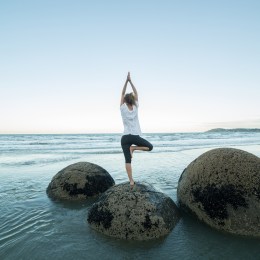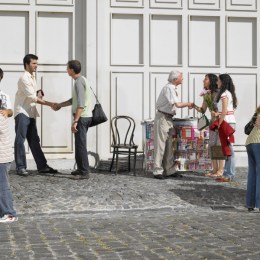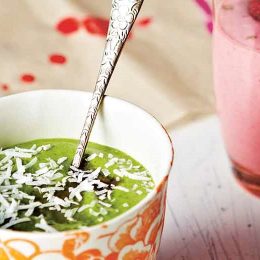Explaining the science behind ear seeds and how they can benefit health and wellbeing.
The health and wellness industry has seen a dramatic increase in the last decade, with consumers continually searching for products and services to improve their overall health and wellbeing. Alternative medicine practices such as Traditional Chinese Medicine and Naturopathy are also increasingly becoming well-known and sought after, especially when it comes to treatments like acupuncture.
To support these treatments, there is now a popular practice combining both acupuncture and acupressure in the form of jewellery known as ‘ear seeds’; but what exactly are ear seeds? Who can perform these treatments?
Katy from Seeded Wellness gave us some expert insight on these holistic tools:
Here is what you need to know:
Katy: “Applying ear seeds is more than a pretty aesthetic. Based on traditional Chinese medicine, ear seeds are a form of auriculotherapy, which uses tiny metal pellets to apply acupressure to acu-points on the ear. It’s an alternative practice based on the concept that the ear is a micro system that reflects and affects the entire body. The thought behind it is the outer ear can be treated to affect conditions such as physical, mental, or emotional health.
It’s not a new practice. The oldest history of auriculotherapy dates back 4000 plus years, however the Auriculotherapy mostly used today is a hybrid form of TCM and western medicine that comes from a French neurologist Dr Paul Nogier in 1951. It was Dr Nogier that published extensive works on his research when he found various points located on the ear related to specific points on the body.
An easy way to think about it is that the ear is like a switchboard to the brain. The ear is highly innervated so placing pressure on various reflex or acu points stimulates these nerves which then communicates to organs and parts of the body via the brain. Dr Nogier’s research has also been backed by the world health organisation who recognised Auriculotherapy as a therapeutic service in 1990.”
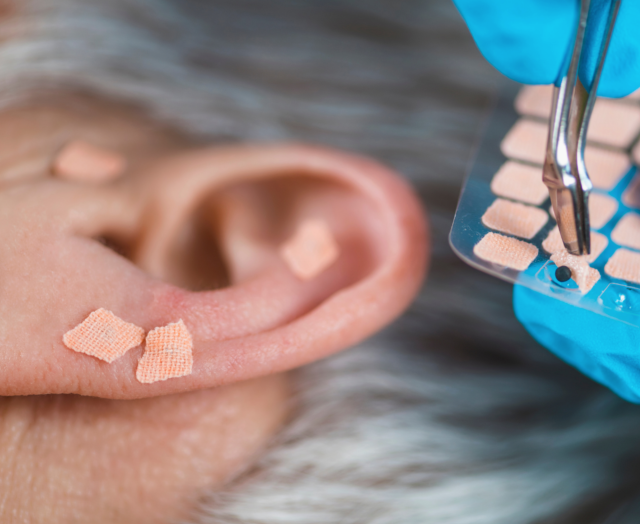
(source: Seeded Wellness)
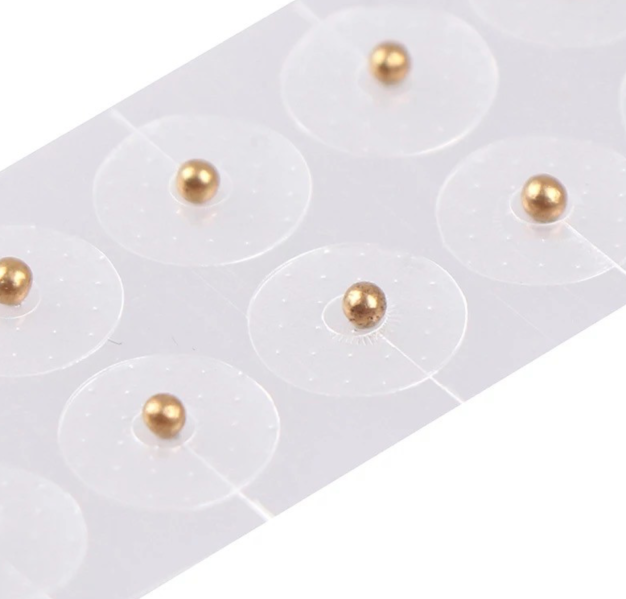
(source: Seeded Wellness)
Why ear seeds?
Katy: “Part acupuncture, part acupressure. Ear Seeding helps energy (qi) flow better through your organs, in turn nourishing your body’s systems. Auriculotherapy is used to support and promote the release of natural endorphins, the “feel-good” chemicals in your body. Unlike acupuncture which uses needles to target the point, ear seeds work on their own by applying gentle pressure via metal pellets (either 24k-Gold or silver) affixed via adhesive tape to the reflex point. Ear seeds are left on the ear for up to 4-days, providing a gentle and sustained therapeutic effect.”
What are they used for?
Katy: “Ear seeds may look like a great pair of earring, but studies show they help to boost emotional well being through the release of natural endorphins, “feel-good” chemicals in your body. Ear Seeding can be used for a variety of concerns such as aiding relaxation, sleep problems, anxiety & depression, weight management, pain, and inflammation.
In 2020, a review of 24 clinical studies found that in 22 cases, ear seeds could ease stress, anxiety and depression, while a 2017 study involving a clinical trial of 180 people found that ear seeding could reduce symptoms associated with pain and anxiety.”
Who can perform Ear Seed treatments?
Katy: “This practice is fast gaining popularity amongst skin and massage therapists, physiotherapists and chiropractors. It is a practice best performed by someone with experience in massage, acupressure or reflexology.
As ear seeding is an acupressure service, it falls under most therapists insurance. As with all services, it’s best to check with your insurance company before launching the practice.”
Read SPA+CLINIC’s latest issue here:
There are 5 ways you can catch up with SPA+CLINIC
- Our quarterly print magazine, delivered to your door. Subscribe here.
- Our website, which is updated daily with its own completely unique content and breaking news.
- Our weekly newsletter – free to your inbox! Subscribe here.
- Our digital magazine – click here to view previous issues.
- Our social media – see daily updates on our Instagram, Facebook & Linkedin


